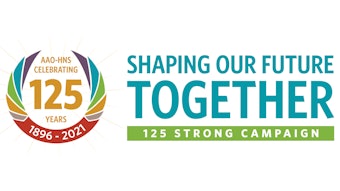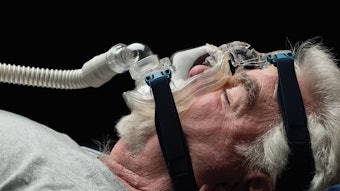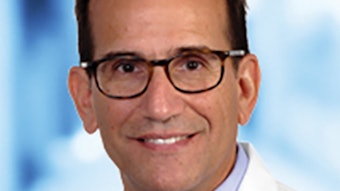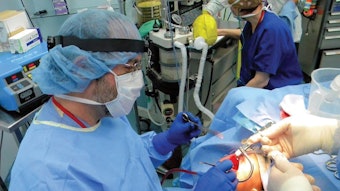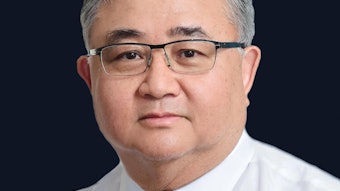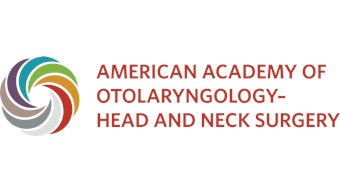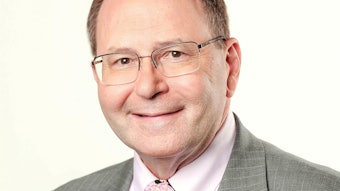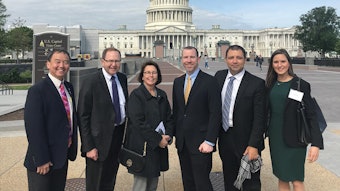Out of Committee: Geriatric Otolaryngology | Evaluation and Management of Eustachian Tube Dysfunction in the Geriatric Population
Otologic and hearing complaints are the most common reasons that the elderly present to an otolaryngologist.
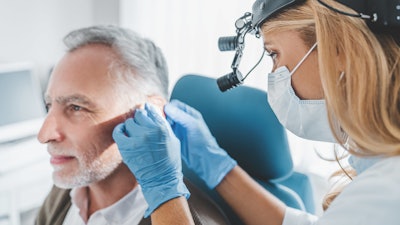
Introduction
Otologic and hearing complaints are the most common reasons that the elderly present to an otolaryngologist. While eustachian tube dysfunction (ETD) is a difficult disease to treat in the general population due to a lack of efficacious interventions available, it is even more difficult to treat in the geriatric population. This is because there is a gap in the literature regarding the evaluation and management of geriatric patients who present with ETD.
Evaluation
The initial evaluation should begin with a characterization of the patient’s symptoms. Common symptoms of ETD include the sensation of aural fullness, popping, pain, pressure, clogging, and underwater sensation. There are three broad categories of ETD.
Acute dilatory ETD is usually brought on by an upper respiratory tract infection or an exacerbation of allergic rhinitis. It may be accompanied by a serous or acute otitis media. Chronic dilatory ETD presents with long-standing symptoms that are independent of any acute disease process. Baro-challenged–induced ETD is diagnosed in patients who are affected by changes in ambient pressure. This is common among flight attendants and scuba divers. Their physical exam is often normal upon presentation although if recently baro-challenged, they may have a serous effusion or hemotympanum.
Patulous ETD is unique from the others as the issue is a failure of the eustachian tube (ET) to close. This results in the presence of autophony—the defining characteristic that can be used to differentiate it from the other two types. Patients will report feeling as though they are talking into a wind tunnel and experience a loud echo or abnormally loud perception of their voice. This may be brought on spontaneously or by using decongestants, prolonged talking, and weight loss.
A recent publication by Fischer et al. showed that the prevalence of ETD among the elderly was 5.4%. This number was even higher in patients with a diagnosis of upper airway digestive tract cancer at 9.1%. They also noted that patients with a diagnosis of ETD were four to five times more likely to have a diagnosis of chronic rhinitis, chronic rhinosinusitis, and allergic sinusitis, and they were 2.4 times more likely to be diagnosed with reflux. These findings support the finding of ETD in a geriatric patient should prompt an evaluation for upper aerodigestive tract malignancy, sinonasal inflammatory disorders, and reflux.1
Anatomic and Physiologic Differences in the Geriatric Population
Little is known regarding the underlying differences between ETD in the geriatric population versus the general population. Newman et al. noted that there are several anatomical changes of the middle ear and ET that occur during the aging process, including thinning and loss of efficient mobility of the tympanic membrane, stiffness of the ossicular chain, and degeneration and atrophy of the intra-aural muscles and ligament fibers.2
Newman et al. determined that the ET in the geriatric population can be hypofunctional compared to the function of young adult ETs. Some degree of ETD was detected in 16.5% of an elderly sample in a nursing home. It is reasonable to assume that in addition to a generalized decrease in synergistic muscle activity and strength, the musculature of the ET would also be altered to some extent. Takasaki et al. verified this assumption in 1999 by comparing temporal bone specimens of individuals aged two days to 88 years. They determined that calcification of the ET cartilage and TVP muscle were closely associated with aging, likely predisposing elderly patients to ETD.3
Yamaguchi et al. determined that in patients over 60 years old, the duration of patency of the ET was shorter than that of patients younger than 60 years old.4 The ET is lined by pseudostratified columnar cells, but in adults over the age of 60 as well as children, increased numbers of non-functioning cells such as squamous and cuboidal cells have been appreciated when examined, leading to mucocilliary dysfunction.5
Treatment
There is a paucity of literature guiding the treatment of ETD in the geriatric population. The usual treatment for ETD is aimed at addressing the underlying causes. The most common cause of dilatory ETD is mucosal inflammation within the cartilaginous ET, usually secondary to allergic rhinitis, chronic rhinosinusitis, laryngopharyngeal reflux, and smoke exposure.6
Oral decongestants are known to affect comorbid conditions, such as high blood pressure, which are common in the elderly. First- and second-generation antihistamines have been associated with higher incidences of adverse effects. Intranasal corticosteroids have the most favorable safety and efficacy profiles in older adults with allergic rhinitis.7 A recent meta-analysis by Valenzuela et al. concluded that there is no evidence that intranasal corticosteroids are not associated with a significant risk of developing elevated intraocular pressure; however, the presence of glaucoma is a real clinical adverse event of concern. The decision to prescribe nasal steroids should be made to specifically treat an associated condition thought to be contributing to ETD, and not specifically to treat only ETD.
If medical and conservative therapy fails, surgical interventions may be considered. The gold standard for the treatment of ETD is the placement of short-term ventilating tubes. While effective, the tubes usually extrude within 6-12 months and patients are left wondering if there is a more permanent option available. Eustachian tube balloon dilation has been shown to be durable through 52 weeks in 57% of patients.8 It is important to note that the average age of patients in this study was 55.6 (Std 14.1), so it’s unclear if these results can be extrapolated to the geriatric population. Regardless, we feel it is reasonable to present this option to the patient and a shared decision to proceed with balloon dilation may be made.
References
1. Fischer JL, Riley CA, Hsieh M-C, Marino MJ, Wu X-C, Mccoul ED. Prevalence of Eustachian Tube Dysfunction in the US Elderly Population. Orig Res Otolaryngol Otolaryngol Neck Surg. 2020(6):1169-1177. doi:10.1177/0194599820932541
2. Newman CW, Spitzer JB. Eustachian Tube Efficiency of Geriatric Subjects. Ear Hear. 1981;2(3):103-107.
3. Takasaki K, Sando I, Balaban CD, Haginomori SI, Ishijima K, Kitagawa M. Histopathological changes of the eustachian tube cartilage and the tensor veli palatini muscle with aging. Laryngoscope. 1999;109(10):1679-1683. doi:10.1097/00005537-199910000-00024
4. Yamagushi T. Change with aging in eustachian tubal function--eustachian tubal function of normal ears. Nihon Jibiinkoka Gakkai Kaiho. 1994;87(4):668-673. doi:10.1017/CBO9781107415324.004
5. Tomoda K, Yamashita T, Kumazawa T. Scanning Electron Microscopic Study of Human Eustachian Tube Epithelium: Aging and Pathologic Changes. Auris Nasus Larynx. 1985;12:S169-S172. doi:10.1016/S0385-8146(85)80138-3
6. Adil E, Poe D. What is the full range of medical and surgical treatments available for patients with Eustachian tube dysfunction. Curr Opin Otolaryngol Head Neck Surg. 2014;22(1):8-15. doi:10.1097/MOO.0000000000000020
7. Slavin RG. Special considerations in treatment of allergic rhinitis in the elderly: Role of intranasal corticosteroids. Allergy Asthma Proc. 2010;31(3):179-184. doi:10.2500/aap.2010.31.3342
8. Anand V, Poe D, Dean M, et al. Balloon Dilation of the Eustachian Tube: 12-Month Follow-up of the Randomized Controlled Trial Treatment Group. Otolaryngol - Head Neck Surg (United States). 2019;160(4):687-694. doi:10.1177/0194599818821938



